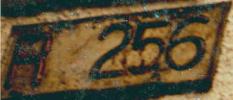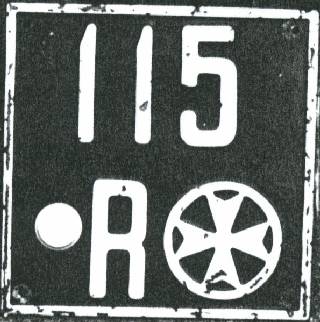
Picture 1: Rear, before 1925(?)
The island of Rhodes, the main of the archipelago of Dodecaneso, became the headquarters of the Order of Knights of St. John from the beginning of the 14th century and had two centuries of great splendour until 1522, when the Turkishes invaded it and the Knights had to escape to Malta, becoming the well-known Knights of Malta. In 1912 Rhodes was taken by Italy that was already fighting with Turkey in Libya and it was Italian until the end of the Second World War.
During the Italian time plates were regularly issued, like in all the Italian colonies in Africa. At the beginning they had black digits on white background, with the letter R followed by a serial number, as you can see in the first picture, even if it is not very clear. Then in 1925 (?) they became rectangular or square with white digits on black background, following the same format of Italian plates, at the beginning (until 1935) with the number before the origin code, later with the origin code before the number. The main difference was the big encircled Maltese cross, as you can see in the pictures number 2, 3 and 4: it was placed in various places or could even be absent (picture number 5, probably after 1935). The pictures number 3 and 4 show a couple of plates with the same number: the front plate was much smaller like Italian front plates of that same time.

Picture 1: Rear, before 1925(?)
 Picture 2: With the cross (two lines) |
 Picture 3: With the cross (one line, front)  Picture 4: With the cross (one line, rear) Picture 5: Without the cross (1935?) |
Moreover many codes were used: R (see picture), RODI and RD. It's possible that also the code GR (Governo di Rodi) or CR (Colonia di Rodi) was used, but it isn't sure. Last, notice the symbol of fascio, as in all Italian plates.
Motorbikes had similar plates, but they were square and smaller.
I want to thank very much Vincent Moens for the pictures number 1, 3 and 4, and Peter Auckel for the picture number 2! the picture number 5 is taken from the ALPCA archives.